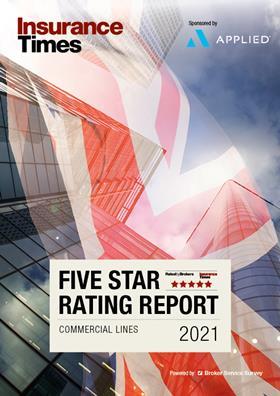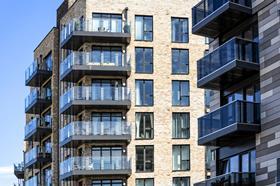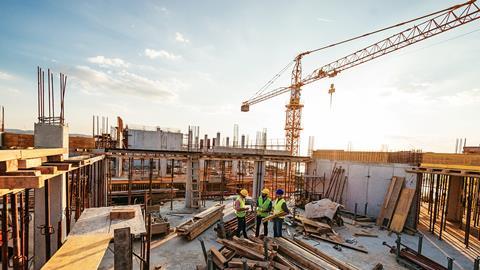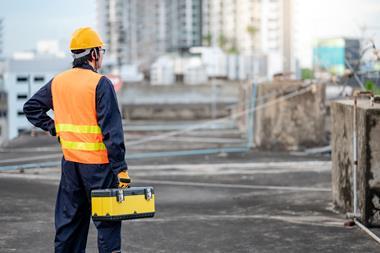Trade association believes historic liabilities following 2017’s Grenfell Tower tragedy will lead to current claims exposure for insurers providing professional indemnity within the construction sector
Insurers are warning of the need for urgent reform to the UK construction sector amid predictions that unless change is delivered, the challenges of obtaining professional indemnity (PI) cover will only increase.
For example, the International Underwriting Association (IUA) has called for continuing improvements to regulation and culture, prioritising quality construction and safety over cost-cutting, amid concerns over both historic and future PI claims in the construction industry.

An industry survey published by the Construction Leadership Council in March highlighted significant cost increases and the introduction of new restrictions on professional indemnity insurance.
Such tightening coverage terms are the result of a considerable period of difficult underwriting conditions and deteriorating claims performance, driven partly by endemic problems within the industry, according to members of the IUA’s Construction Professional Lines Working Group.
Many issues influencing risk management have already been identified by Dame Judith Hackitt’s Independent Review of Building Regulations and Fire Safety, established in the wake of the Grenfell Tower disaster and published in 2018.
Chris Jones, director of legal and market services at the IUA, told Insurance Times that there remained concerns over the culture of the construction sector
“A shift in culture is required to overcome continuing uncertainty about the enforcement of regulation and a lack of oversight and accountability in the construction process,” he said. “The issues around culture also lead to a wider debate about regulation.
“There is evidence that we are seeing a priority within the construction industry of price over quality. That is not to say price over safety, but margins are so tight it is an issue of cost cutting.”
He added: “The lack of accountability within the current regulations has allowed that cost cutting - the impacts are finding their way through the system and into claims.”
Historic liabilities threat
Jones pointed out that the UK government is taking steps to look at the regulatory regime and how to address the issues that are already apparent in this area.
He said: “We are encouraged by a proposed overhaul of the regulatory framework, but it is clear that many historical liabilities have yet to develop into claims and this remains a key factor for insurers in their underwriting assessment.”
He explained that historic liabilities concern the response to the Grenfell Tower tragedy, which resulted in the death of 72 residents and injuries to a further 70 individuals in 2017.
The building’s cladding contributed significantly to the spread of the fire and the loss of life; this prompted the government to begin a process of checks on high-rise residential buildings across the country.
“Post Grenfell, we are seeing investigations and with it the need for remediation work to begin to come through,” explained Jones. “However, the remediation work and the claims around it have yet to flow through. Those claims are expected to arise and apart from these historic claims, we have to look to the future.

“The government has already announced a programme of 5,000 external wall system inspections and we have to consider there will be claims arising from some of those inspections.”
PI claims scope
He explained that - at present - the big issues for insurers were the risks around fire safety and cladding, which placed a number of job roles in the PI spotlight.
“Fire risks are a concern for obvious reasons, therefore fire engineers, surveyors and even architects are at risk of claims,” explained Jones. “In terms of the historic claims, when the big claims do come through it may well be that some firms are no longer in business, so it is likely that claimants will look to ancillary firms and roles.”
Jones added that since Grenfell, underwriters have placed limits and - in some cases - exclusions around fire-related claims into policies.
“Prior to the tragic loss of life at Grenfell, coverage was broader and it is expected that these claims will far exceed the premium received,” he added.
“In the longer term, the hope is that things will be brighter. It will be brighter if we see changes to the regulatory regime in place, which will provide greater security for insurers and clients alike.”
Premiums have increased significantly in some areas of the construction sector’s PI coverage, driven not only by a general hardening of the market after over a decade of inadequate premiums, but also the pressure on the Lloyd’s market with the ongoing focus on the poorest performing risks - with PI heavily featured.
Jones said: “In spite of many challenges, insurers continue to offer a wide and competitive range of construction professional indemnity products. Construction is a complex industry and IUA members are keen to work collaboratively to ensure a better dialogue on risk management. We are pleased to be represented at the Construction Leadership Council.”
Jones conceded that in niche areas of construction PI risk, brokers and clients were finding difficulties - this includes around fire safety, fire management and the installation of fire management systems and external wall systems.
“Brokers will find it challenging to find markets in some of the niche risk areas,” he added. “It is why the industry is working with the government to put in place new systems that will address the current issues we face.”













































No comments yet